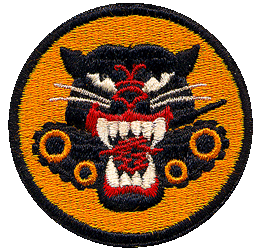 Harrison J. Herman
Harrison J. Herman
Biography: Harrison J. Herman was born on November 9, 1892, in Cincinnati, Ohio. He was the second son of Fred J. Herman, who was a Colonel in the U.S. Cavalry. Harrison had an older brother named Frederick.
Harrison moved with his father from assignment to assignment, including the Philippines. He was tutored by his father due to the inadequate schools they experienced at the various stations.
Harrison entered the U.S. Military Academy in 1911, receiving the nickname “Beans” as a cadet. He was well-liked and became a member of a number of groups. In his senior year, 1916, he became Captain of both the Medicine Ball Team and Cullum Hall football squad, a junior varsity team, on which he played four years.
Service Time: After graduation, he was assigned to the 28th Infantry at Fort Ringgold, Texas, and was quickly promoted to 1st Lieutenant. Early the next year, he transferred to the Cavalry and during WWI, he served overseas with the 3rd Cavalry at Brest, France. He was assigned to the Tank Corps at the rank of Captain but returned to the 3rd Cavalry to Fort Ethan Allen, Vermont, at the rank of Major.
 During the years between wars, he married the former Ruth Bingaman in New York City in 1919. In his spare time, Harrison enjoyed polo and was a skilled player. He also attended and graduated from a number of schools, including the Air Corps Tactical School in 1930, the Cavalry School and the Command and General Staff School. He served as an organizer and commander in the California Civilian Conservation Corps and served two tours of duty with the Organized Reserves in New England.
During the years between wars, he married the former Ruth Bingaman in New York City in 1919. In his spare time, Harrison enjoyed polo and was a skilled player. He also attended and graduated from a number of schools, including the Air Corps Tactical School in 1930, the Cavalry School and the Command and General Staff School. He served as an organizer and commander in the California Civilian Conservation Corps and served two tours of duty with the Organized Reserves in New England.
During WWII, he was initially tasked with the formation of the 691st Tank Destroyer Battalion in 1941, at Fort Bliss, Texas. He was promoted to Colonel and served briefly as the commander of the 5th Tank Destroyer Group but was then given command of the 7th Tank Destroyer Group at Camp Hood, Texas. He shipped out with them from the New York port on February 9, 1944, arriving in England on the 18th. They arrived in France on July 18th and functioned as the VIII Corps antitank section. They moved into Luxembourg on October 23rd and set up their command post at Harlang, which was five miles from Bastogne.
As the Germans moved closer during their push into the Ardennes, the 7th TD Group was ordered to Neufchateau and then to Liebramont to protect the left flank of the 8th Corps, whose C.P. had been in Bastogne. At 3:00 in the afternoon of December 26th, German bombers, two M.E. 109s and a captured American P-38 flew over their location. Everyone took cover as best as possible and Colonel Herman ended up in a slit-trench. A 500 pound bomb hit near his position killing him and Major George Davidson, a lieutenant, and several enlisted men. In total, 25 men were killed during the attack.

He was initially buried in the U.S. Military Cemetery at La Failly, France, but was later re-interred in Arlington National Cemetery in Arlington, Virginia, Section 11, Site 599 SH. He was postumoustly awarded the Purple Heart and the Legion of Merit. The Legion of Merit Citation reads:
“The President of the United States of America, authorized by Act of Congress, 20 July 1942, takes pride in presenting the Legion of Merit (Posthumously) to Colonel Harrison Herman, United States Army, for exceptionally meritorious conduct in the performance of outstanding service as Commanding Officer, 7th Tank Destroyer Group from 19 to 26 December, 1944. Colonel Herman, when assigned the mission of providing for the close-in defense of the VIII Corps in the Ardennes salient organized a task force of 2,000 men and established road blocks along the Liebramont-Recogne road net which thwarted every German effort at penetration. His sound tactics delayed and channeled the enemy advance to that point where it could most expeditiously be defeated.”
Later during the war and/or during the occupation period the 7th TD Group set up their command post in what they would affectionately name “Camp Herman” in honor of their fallen commander.
I want to thank Jim Moore for his assistance with this tribute as well as Anne Cady for the use of the grave marker photo. The main photo is used by permission of Digital Data Online, Inc. and E-Yearbook.com. The majority of the information was gathered from the memorial written by his father, Fred J. Herman, for the West Point Association of Graduates. You can read the complete document at the following link.

